Housing
You can house your guinea pig indoors or in an outside hutch.
Outside
A guinea pig must become acclimatised slowly to the cold, so it is advisable to wait until the summer before putting it outside. This way it can gradually get used to the cold as Autumn and Winter draw near.
The hutch should be waterproof, draughtproof, escape proof, and easy to clean. An outdoor hutch should be off the ground and protected from predators. The roof should be sloping and leak-proof, with an overhang to provide protection from the elements. A thermal and waterproof hutch cover is advised to further protect from predators, wind and rain.
Position the hutch in the shade so that it is away from direct sun in the summer and sheltered from extremes of weather in the winter. During the coldest months of the year consider putting the hutch into a well ventilated shed, garage or outhouse. Never put a hutch near vehicles or in a garage used by cars.
Inside
Indoor guinea pig cages are readily available,and since guinea pigs are sociable animals they will enjoy interacting with you daily.
The cage will need to be in a well ventilated but draught free area, away from heat sources such as fires and radiators and out of direct sunlight.
Make sure the guinea pig can't chew or pull any electrical cables into their cages.
Bedding and Cleaning
A soft absorbent bedding like Carefresh is considered a better cage covering for guinea pigs than wood-shavings. Guinea pigs have sensitive feet and can be prone to pododermatitis (Bumblefoot). A thick covering of Carefresh bedding and hay may help prevent this painful condition. Provide plenty of hay for bedding. Avoid straw and sawdust as they can cause injures and irritation to the eyes.
The hutch should be cleared of any soiled bedding daily and thoroughly cleaned at least once a week with a pet safe disinfectant.
Clean food and water bottles daily.
Disinfect the water bottle weekly in a sterilising solution suitable for babies. Follow the instructions carefully and rinse thoroughly before use.
Comments from our Staff
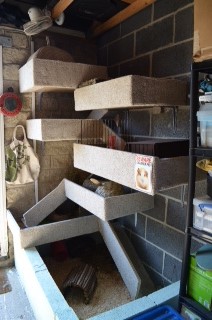
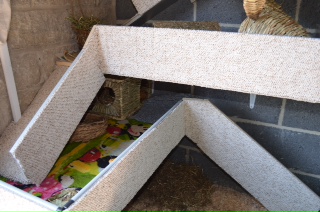
"All this was made out of recycled wood and carpet off cuts, showing that it doesn't need to be expensive. All ramps are carpeted making it soft and safe for the guinea pigs delicate feet".
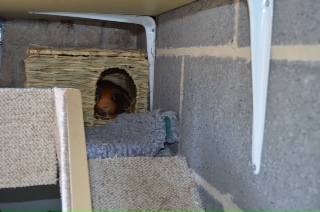
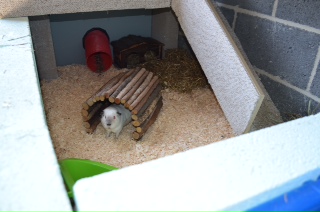
"Thistle relaxing on the first floor and Bubble hiding on the ground floor. The red access tube leads to their outdoor area".
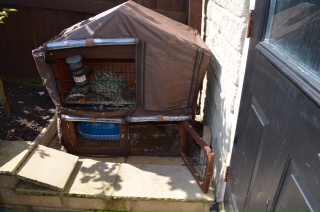
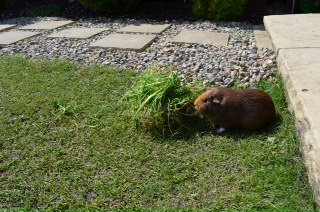
"From the outdoor area they have access to the garden, to run, play and eat grass".
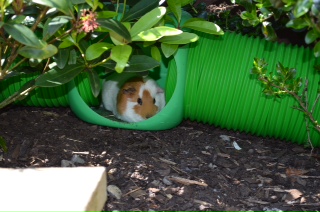
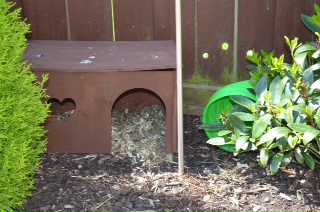
"In the garden we have lots of tubes and hideaways hidden inbetween the trees and plants".
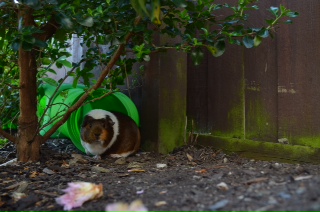
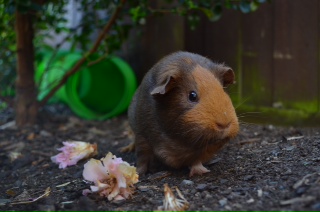
"Toys needn't be expensive either, all that is required is a little imagination. We grow herbs in our garden and hang them up with string for the guinea pigs to eat. Fresh grass and dandilion leaves are stuffed into empty toilet and kitchen roll tubes. Much more interesting than eating food from a bowl!"
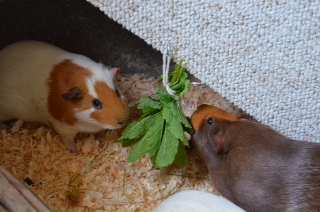
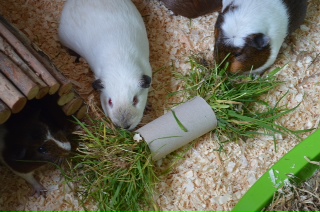
"Hay baskets are hung all around the play area so they have a constant supply".
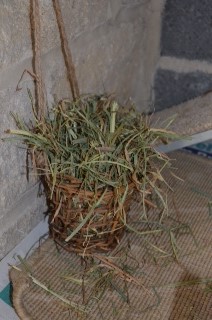

.jpg) Our Head Nurse Caroline Ashworth (RVN, Cert VNES) and her family are enthusiastic guinea pig owners. Her husband has kindly built the guinea pigs a large play area in the garage, which is connected to an outdoor hutch.
Our Head Nurse Caroline Ashworth (RVN, Cert VNES) and her family are enthusiastic guinea pig owners. Her husband has kindly built the guinea pigs a large play area in the garage, which is connected to an outdoor hutch.